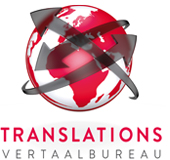MENU
To answer that question, we need to take a look under the hood. How does a translation programme work?
Let’s start with the simplest version. You could have the computer pick up the dictionary entry for each word and write down the translation of that one word. But even in a simple sentence, that goes wrong.
Take the first sentence of Dutch novelist Herman Koch’s international best-selling book The Dinner. In Dutch it’s: “We |gingen |eten |in| het | restaurant”, which means “We went out to eat at a restaurant.”
But that’s not what you get when you translate word by word: "We|went| food|in|the|restaurant.”
It goes wrong because the software does not understand grammar. First of all, in this context, “in” should be translated as “at” when it comes to a restaurant. But, even worse, “eten” in this context is not a noun (“food”), but a verb (“to eat”).
So you’d need to give the programme an idea of how language works. You could write down specific rules: for example, that a word after "gingen" is probably a verb. Then again, it’s pretty easy to come up with an example that disproves that. Maybe we should add that if you have "gingen" before and a preposition after, a word is probably a verb.
You see, it gets complicated pretty quickly. It is difficult – if not impossible – to write down all those grammatical rules.
And then language is also subject to change. Rules change. New phrases or words such as “to Tinder” and “cannabusiness” throw a spanner in the works.
